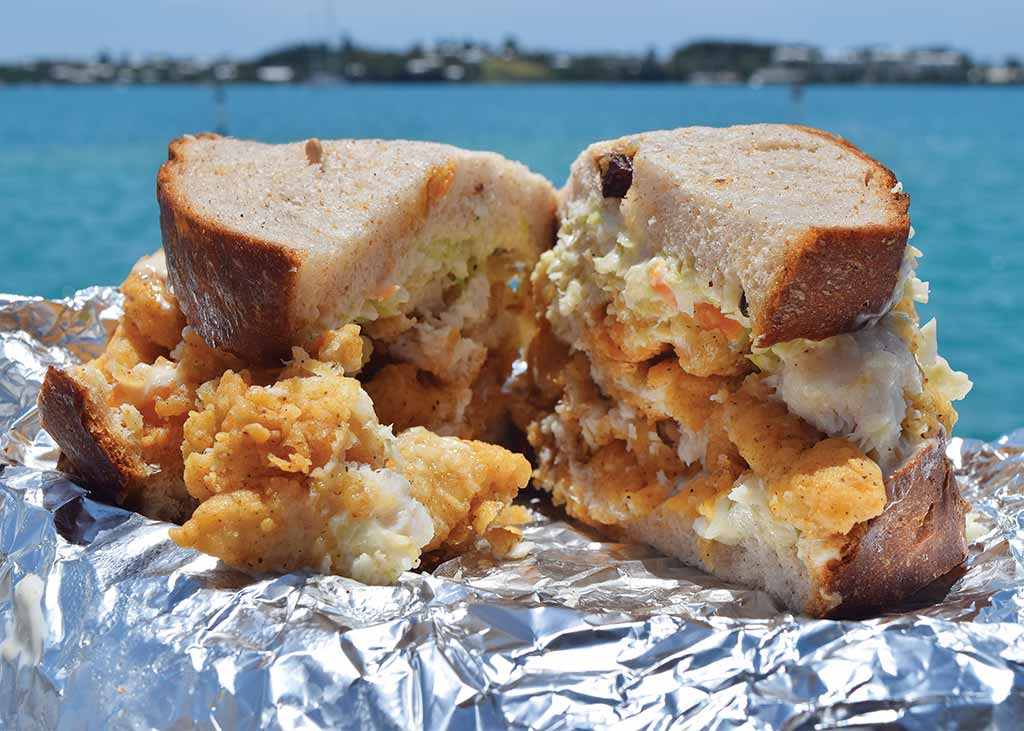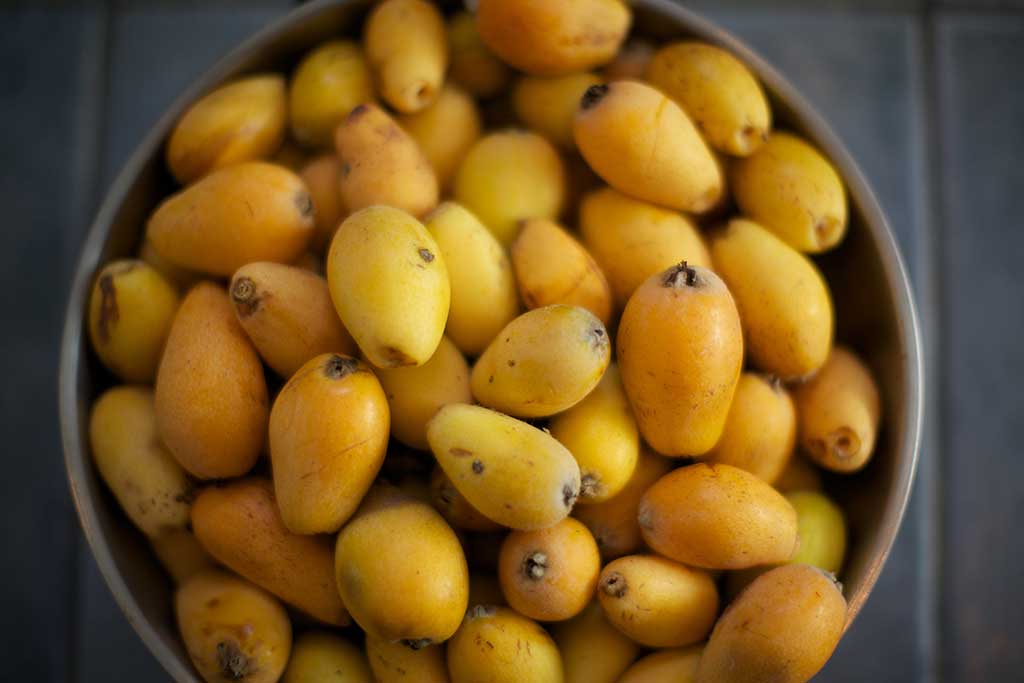Is there a true Bermudian cuisine? Gourmands might snigger at such a proposition, but Bermuda has claimed its repertoire of hallmark dishes—usually a melting pot of items from other places adapted for local menus. The amalgam of British, West Indian, African, and Portuguese cultural influences has created a somewhat eclectic collection of local dishes. Many are pure comfort food, and probably not the best for waistlines or arteries, but they are usually delicious.
British cuisine has donated fish ’n’ chips, shepherd’s pie, steak pies, and teatime desserts like scones, pound cake, trifle, and lemon meringue pie. Slavery’s legacy is seen in dishes once rejected by Bermudian white society for their poor-man simplicity but now embraced in the fanciest restaurants; these include cassava and farine pie (made from root vegetables), peas ’n’ rice and johnnycakes (common in the Caribbean), fried chicken legs, fried fish sandwiches (made with local catches like grouper or rockfish), butter-baked lobster, macaroni ’n’ cheese, and sweets like macaroons, gingerbread, and coconut cake. The immigration of Azoreans over the past 150 years has entrenched certain dishes and snacks into the island’s culinary lexicon. Portuguese chourico (spicy sausage) and malacadas (deep-fried doughnuts) are the most common examples, found islandwide at corner stores where hot snacks are served.

Fish sandwich at Art Mel’s Spicy Dicy. Photo © Rosemary Jones.
Restaurants dedicated to these assorted nationalities are good places to sample such dishes. Café Acoreano (Hamilton) is owned and staffed by Portuguese Bermudians. Jamaican Grill (with branches in Bailey’s Bay and North Hamilton) is a very popular family-run café-style eatery with jerk meats and West Indian curries. For the ultimate in British fare, head for any of the numerous pubs throughout the island—Henry VIII Pub & Restaurant, in Southampton, and Hog Penny in Hamilton set the standard—or attend an afternoon cream tea served at tearooms like the Heritage Court at the Fairmont Hamilton Princess, Pembroke. Down-home Bermudian restaurants are becoming sparse these days, as upscale eateries take over, but holdouts like The Spot (Hamilton) and Black Horse Tavern Bar and Restaurant (St. David’s) remain favorites.
Interestingly, there’s been a movement among top chefs over the last decade toward adapting favorite local ingredients and everyman dishes into a more innovative interpretation of Bermudian cuisine on the pricier menus. As a result, there are few top-notch restaurants nowadays that don’t serve a gourmet version of Bermudian fish cakes, banana or loquat chutneys, onion tarts, or rum cake. A recent example is star chef and author Marcus Samuelsson, of Harlem’s Red Rooster fame, who is incorporating his twist on iconic island dishes into the menu of his panoramic new restaurant opening in 2015 in the Fairmont Hamilton Princess.
Bermuda fish is excellent, from the sweet fillets of snapper and rarer rockfish, to the steaks of fresh-caught tuna, wahoo, and swordfish. Lobsters (the spiny variety) are in season September-March; fishing laws are strict, so you’ll see only imported lobster on the menu over the summer months—at least in restaurants. There are no local shrimps, oysters, mussels, clams, or conch, so any of these on local menus have been imported.
Fresh local produce is worth seeking out in season, mainly because imported fruit and vegetables can’t compare with straight-from-the soil versions sold in grocery stores and roadside stands. Large bananas imported from the United States and Central America, overripe by the time they arrive, can’t compete with Bermuda’s own tiny sweet hands of fruit. Similarly, Bermuda carrots, tomatoes, and potatoes are well worth buying if you’re staying in a self-catering unit or simply want to try the local harvest.
Wild fruits are also popular, namely the Surinam “Bermuda” cherry (a sour cherry), which has several harvests throughout the year, and the loquat, which hangs heavy on trees throughout the island in January and February. Help yourself to a taste from trees in local parks or on public land along the Railway Trail. At the height of cherry or loquat season, you often see drivers pulling over to gather a roadside haul or schoolchildren dangling out of trees as they collect a fresh snack. Similarly, Bermudians gather bags of avocadoes to share among friends when the local trees drop their heavy harvests.

Bowl of fresh loquats. Photo © Paul Shapiro.
In the supermarkets, there has been a growing movement among some local farmers to supply organic fare, including organically raised chickens, vegetables, and salad greens. Locally grown products can be found in most large groceries, particularly The Supermart, on Front Street in Hamilton, and Tom Wadson’s farm store in Southampton. Saturday roadside stands in most parishes are also well stocked with fresh fruit and vegetables in season.
Fishers sell their daily catch, including spiny lobsters in season, at roadside stands islandwide. Sometimes, this is simply a guy with a cooler. The best places are at the foot of Scaur Hill in Sandys; Devonshire Dock and Devonshire Bay in Devonshire; Blue Hole Hill in Hamilton Parish; and at the top of Trimingham Hill in Paget, leading out of Hamilton.
The best occasions, outside of restaurants, to sample Bermudian cooking and specialties are public festivals and holidays such as Cup Match, when alfresco gatherings or street fairs usually have food stalls selling fish sandwiches, fish cakes, homemade pies, and other goodies.
Excerpted from the Fourth Edition of Moon Bermuda.